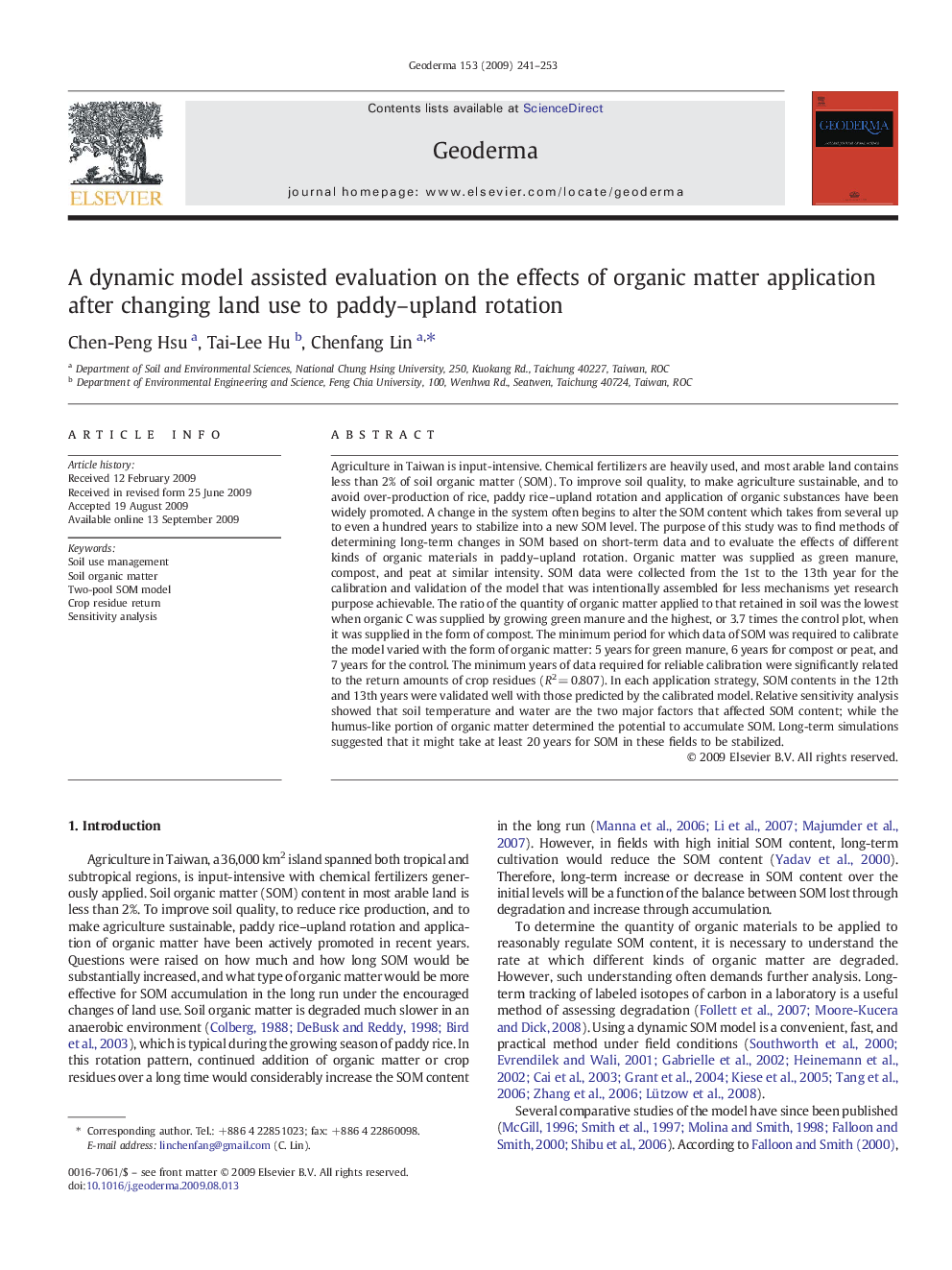| کد مقاله | کد نشریه | سال انتشار | مقاله انگلیسی | نسخه تمام متن |
|---|---|---|---|---|
| 4574308 | 1629528 | 2009 | 13 صفحه PDF | دانلود رایگان |

Agriculture in Taiwan is input-intensive. Chemical fertilizers are heavily used, and most arable land contains less than 2% of soil organic matter (SOM). To improve soil quality, to make agriculture sustainable, and to avoid over-production of rice, paddy rice–upland rotation and application of organic substances have been widely promoted. A change in the system often begins to alter the SOM content which takes from several up to even a hundred years to stabilize into a new SOM level. The purpose of this study was to find methods of determining long-term changes in SOM based on short-term data and to evaluate the effects of different kinds of organic materials in paddy–upland rotation. Organic matter was supplied as green manure, compost, and peat at similar intensity. SOM data were collected from the 1st to the 13th year for the calibration and validation of the model that was intentionally assembled for less mechanisms yet research purpose achievable. The ratio of the quantity of organic matter applied to that retained in soil was the lowest when organic C was supplied by growing green manure and the highest, or 3.7 times the control plot, when it was supplied in the form of compost. The minimum period for which data of SOM was required to calibrate the model varied with the form of organic matter: 5 years for green manure, 6 years for compost or peat, and 7 years for the control. The minimum years of data required for reliable calibration were significantly related to the return amounts of crop residues (R2 = 0.807). In each application strategy, SOM contents in the 12th and 13th years were validated well with those predicted by the calibrated model. Relative sensitivity analysis showed that soil temperature and water are the two major factors that affected SOM content; while the humus-like portion of organic matter determined the potential to accumulate SOM. Long-term simulations suggested that it might take at least 20 years for SOM in these fields to be stabilized.
Journal: Geoderma - Volume 153, Issues 1–2, 15 October 2009, Pages 241–253